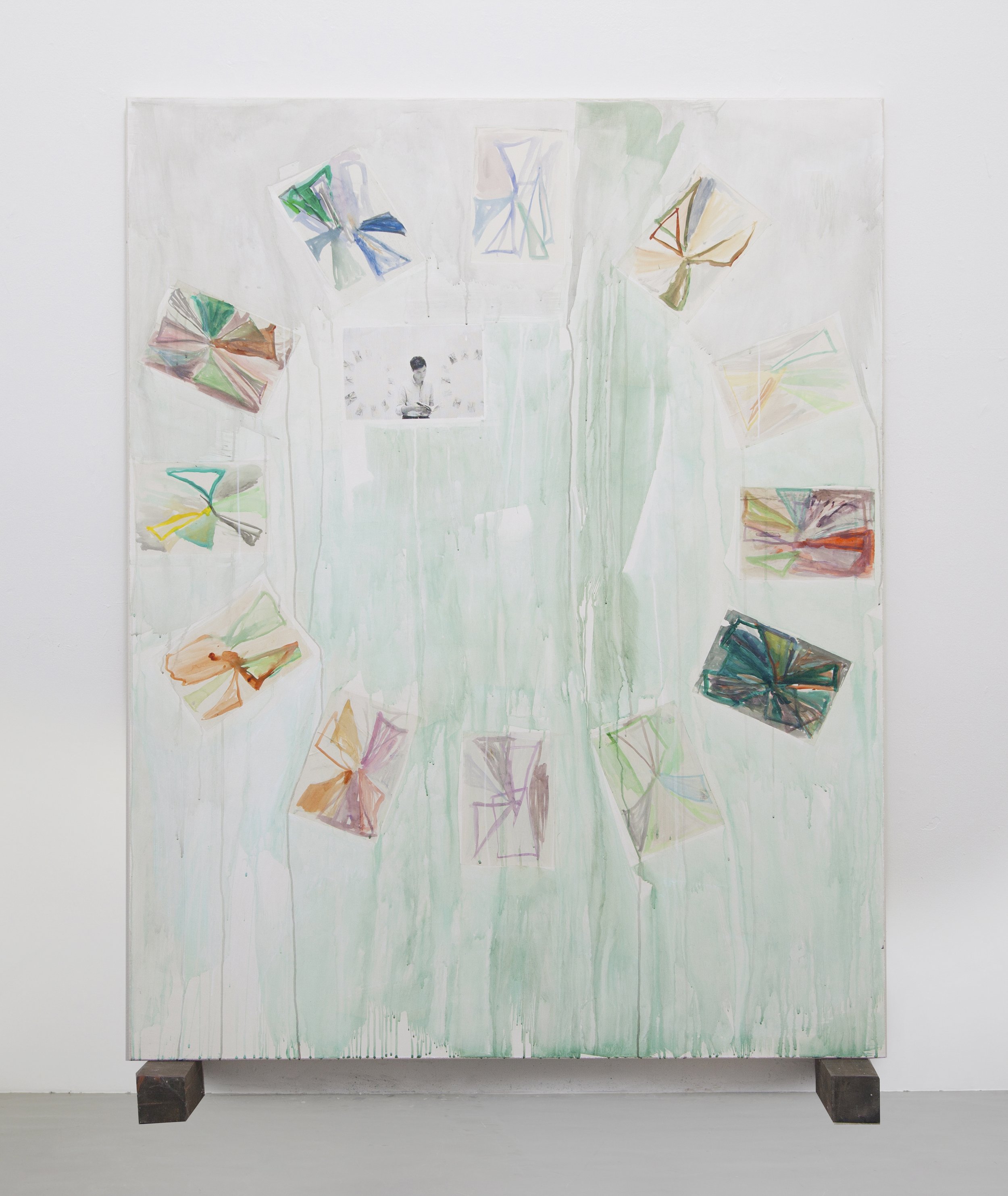One Year Later at Luke and Jody’s
Galerie Barbara Thumm
New Viewings #17
Curated by Domenico de Chirico
May 2020
“One Year Later at Luke and Jody’s” presents a seasons cycle, with a fifth painting as postscript. On each canvas, a ring of color wheels encircle a portrait. “Fall” shows artist Luke Rogers reading in the studio, surrounded by in-progress paintings of the cycle. One of Rogers’ drawings is paired with one of Chapman’s as an introduction to this presentation. In an accompanying text, Chapman writes about returning to Los Angeles last fall, where he stayed with Rogers to make this work.
-
“Form speaks in patterns and repetitions,” he writes. So does experience. “I gave my return more significance than it really had… it was like going back to a pain.
One Year Later at Luke and Jody’s
No amount of marketing will make looking at a painting online satisfying. The translation to the screen is inadequate. Oh well, I thought, clicking send on a new post. But clicking send also reminds me of the postcards On Kawara mailed to friends. He wrote, simply: “I am still alive.”
In a retrospective of his work a few years ago, the wall text quoted someone who received a postcard from him as saying, “I recognized it immediately as art.” I recognize pictures of paintings as art, but when it becomes my only experience of art, it’s disappointing.
Disappointment, inadequacy, dissatisfaction–paintings have this in common with their images. A painting is a partial view. It gestures toward something else, something — one imagines — better.
Painting can express a way of looking at the world–John Berger says this about Poussin, whose paintings I was looking at online when I started this body of work. Poussin’s attitude toward the world was one of order, clarity: he struggles to impose this on the landscape. He ruthlessly expunges ambiguity.
But there is too much complexity and chaos to control, especially by the end. His Seasons paintings were the last ones he worked on, in Rome, where he lived. I read that on Wikipedia, and saw the images of them there. When I enlarge them they get bigger but less clear. They push the frame into the blurry sky, or into the trees.
I looked at these in LA, where I drove last fall to borrow my friend Jody’s studio and live with Luke. Some of the plaster from Jody’s casts were on the studio floor, and when I painted barefoot I would sometimes step on them. At night, I would paint or listen to music, or talk with Luke. And very late at night, there was an injured grasshopper that would come out of hiding and hop on the rosin paper I put down to cover the floor. I am still alive, I imagined him saying.
Luke painted on the other side of the wall. He and I collaborate sometimes–we had worked together on paintings a year earlier, during a similar stay. Our collaborations have given me a sense of shared approach to form. It’s homonymic: one thing resembles another but has a different meaning. Form speaks in patterns and repetitions. On the page, a clock can sound like a color wheel; a color wheel can sound like a washing machine; a washing machine, a lens, a spiral.
A year had passed between when I last saw Luke and Jody in LA and painted there. I painted pages of color wheels and thought of them as entries in a diary. I photographed Luke and the studio. I gave my return more significance than it really had. It felt important. It was like going back to a painting I loved–I’m thinking of a blue Agnes Martin painting, one containing so much beauty, and (in its way) promise. It would tell me, I hoped, there’s something else. Something better.
-

One Year Later
2019
Oil, mixed media, and screen-printing ink on canvas with wood blocks
71 × 55in -

Fall
2019
Oil, mixed media, and screen-printing ink on canvas with wood blocks
71 × 55in -

Winter
2019
Oil, mixed media, and screen-printing ink on canvas with wood blocks
71 × 55in -

Spring
2019
Oil, mixed media, and screen-printing ink on canvas with wood blocks
71 × 55in -

Summer
2019
Oil, mixed media, and screen-printing ink on canvas with wood blocks
71 × 55in
